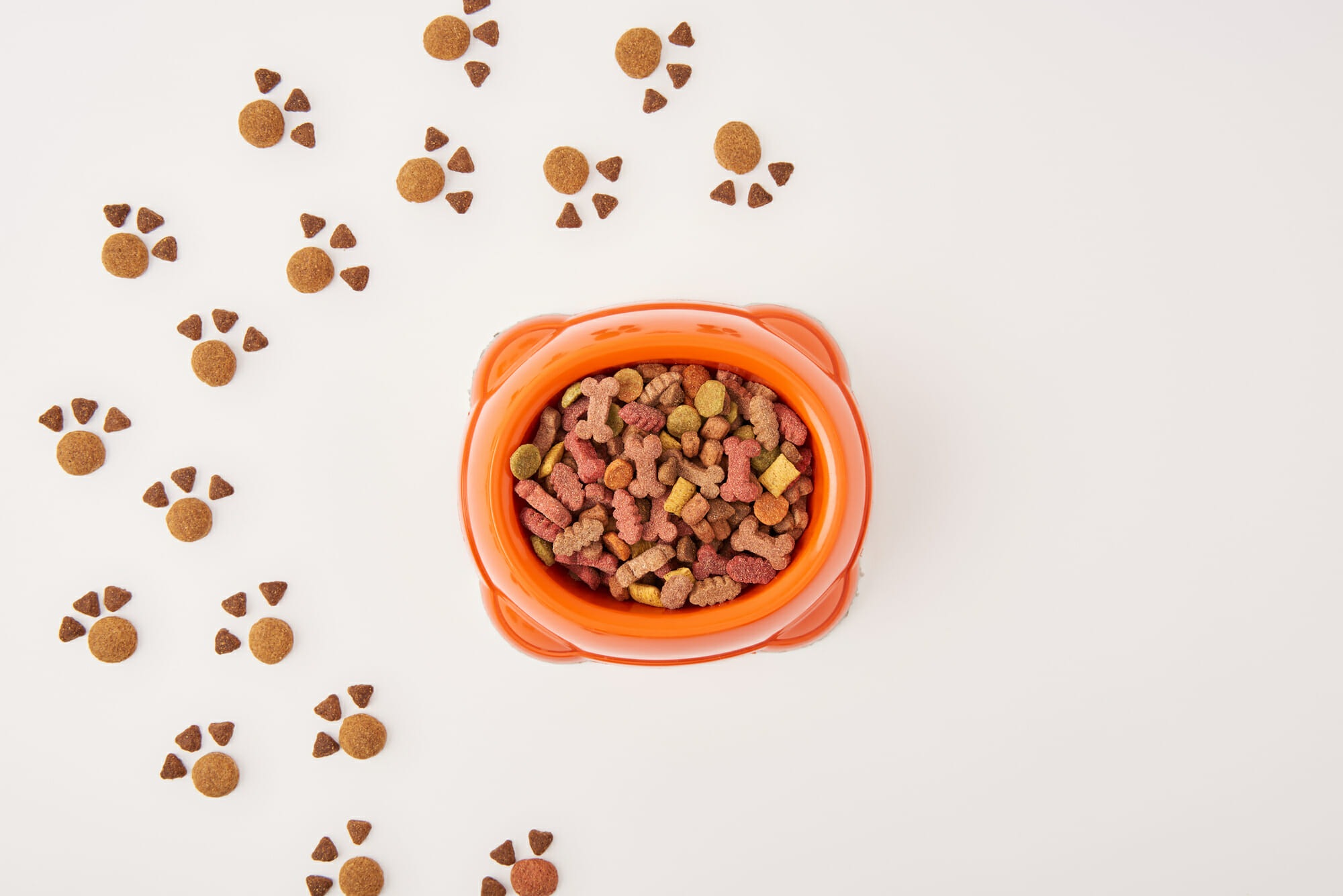Raising a dog from puppyhood to adulthood is one of the most rewarding experiences anyone can have the pleasure to enjoy. Few things are more important to that process than determining the right time to switch from puppy food to adult dog food. No one would think of giving a toddler baby food, let alone a child or full-grown adult! The same holds true for dogs.
That said, while you can easily spot and reject a jar of Gerber Baby Food, even the most ardent dog lovers can be a bit less knowledgeable about recognizing the right time to switch from puppy to adult dog food.
Thankfully, this guide on when to switch to adult dog food can help ensure that you’re ready to make the right decision at the right time.
Consider Your Dog’s Breed and Size
If you’re a dog owner, chances are you know that different dog breeds have different requirements. When you wean your dog off puppy food and switch them over to adult food is another such variation, which will be different depending on several factors, including the size of your dog.
For example, if you own a dog who belongs to a smaller dog breed, such as Shih-Tzus, the one-year mark is about the point where you can start to consider your pooch to be an adult. That said, there are exceptions to this rule, notably toy breeds. Either way, at the end of a full year with your puppy, chances are they’ll be ready to at least start switching over to adult food.
On the other hand, if your dog is a larger dog breed, such as a German Shepherd, you can expect to wait a little while longer. For large and giant dog breeds, you should wait until your dog is at least 18 months old. Large and giant dog breeds take longer to reach maturity, with many dogs still growing after two years. Still, even if your dog continues to grow after 24 months, that should serve as the latest cutoff point for switching them over to adult dog food.
Consider Your Dog’s Weight
Weight is another thing you’ll want to consider when determining when to switch over to adult food. Small dog breeds tend to weigh less than 20 pounds at maturity, while midrange dogs weigh between 21 and 50 pounds, and larger breeds weigh in above that. Once your dog breed has reached their average adult weight, it is time to start thinking about switching over to adult dog food.
It is worth noting that while weight is a useful barometer of maturity for small and medium dog breeds, that is not the case with large or giant dog breeds, whose weight varies widely.
Why Make the Transition?
Puppy food exists for much the same reason as baby food does. It is easier for puppies to eat than adult food, which is harder and can be more difficult for their stomach to digest. At the same time, a puppy, like a human baby, needs a lot of nutrients when they are growing. As such, puppy food is formulated to be loaded with nutrients such as DHA, which is an omega fatty acid that is found in the milk that female dogs give to their puppies.
However, once dogs have reached adulthood, they no longer need their mother’s milk, and likewise do not need foods that are laden with DHA or other ingredients that may have been necessary as a puppy. On the other hand, you need to make sure that your dog is getting the nutrients it needs for life as an adult, and in the proper proportions.
Just as babies can’t stomach steaks, pizza, or the kind of food we want and enjoy as adults, we wouldn’t derive much nutrition (or pleasure) from gulping down Gerber baby food. The same principle holds true for puppies and adult dogs, so it is of the utmost importance that you switch them over to nutritiously-formulated adult dog food once they reach maturity.
How to Transition Your Dog to Adult Dog Food
Of course, knowing that your dog needs to be taken off puppy food and put on dog food is one thing. Being able to do it the right way is a different matter altogether. This is a big change for your dog, and you don’t want to shock them or give them an upset stomach due to a sudden switch.
Just as you wean a baby off breastfeeding or formula milk, you want to transition your dog from puppy to dog food nice and slowly. Ideally, this should be done over a series of days.
For the first couple of days, the change shouldn’t be too drastic. Most of the food you should be feeding your dog should still be their old puppy food. The introduction of the new, adult dog food should be very slow, and in small quantities. About one-eighth of a cup should do.
The ratio of the new adult dog food to the old puppy food should, thus, skew heavily in favor of the latter. The two should ideally be mixed together to increase your chances of your dog actually eating it.
During these first couple of days, you’ll want to watch your dog carefully. Make sure they’re actually eating the adult dog food, and that they aren’t turning their nose up at it or suffering an upset stomach or any other negative reaction.
Assuming your dog adjusts to the new dog food just fine, you’ll want to remove a bit of the old dog food each day, increasing the ratio of the new adult dog food. By day six or seven, the new adult dog food should make up the majority of their food. The switch should not take more than 10 days.
Your How To Transition Dog Food Plan(source: Purina.com)
DAY 1-2
When transitioning dog food, introduce new food to your dog in small amounts, still primarily feeding him his old food. When switching dog food, measure the amount of new food that you’re adding in and make sure to remove an equal amount of your dog’s current food. (For example, if you are adding in a 1/8 a cup of the new food, remove 1/8 a cup of the current food.)
DAY 3-5
By now, transitioning dog food is part of your routine. Feed a little bit more of the new food to your dog each day, while continuing to remove the equivalent amount of the current food.
DAY 6-7
Continue adding in your dog’s new food, and removing an equal amount of the current food. By now the new food should be making up the majority of your dog’s meal.
DAY 7-10
Continue increasing the amount of the new food and decreasing your dog’s former food until you are feeding the new food exclusively. Now you’ve successfully completed switching dog food!
Conclusion
Your dog depends on you for a healthy, nutritious meal. Make sure they’re getting it by taking them off puppy food and putting them on nutritiously-formulated adult dog food at the right point. The right dog food can make all the difference in ensuring your dog leads the happy, healthy life they deserve.

